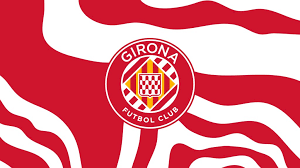
Fulham FC: A Timeless Legacy in English Football
Fulham FC isn’t just one of London’s oldest football clubs—it’s a living testament to the evolution of the beautiful game. Founded in 1879, the club has witnessed the highs and lows of English football, shaping its identity through decades of triumphs, struggles, and unforgettable moments. More than just a team, Fulham FC represents unwavering loyalty, the heartbeat of its devoted fans, and the deep cultural roots of football in England. As we journey through its storied past, we uncover the milestones, legends, and spirit that make Fulham FC a club like no other.
The Origins of Fulham FC
The inception of Fulham FC can be traced back to a small group of churchgoers from the local area. Established in 1879 as St. Andrew’s Church Sunday School, the club evolved through various iterations, eventually adopting the name Fulham Football Club in 1888. The club’s early years were characterized by friendly matches and local competitions, providing a foundation for future success.
The Formation of the Club
When examining the origins of Fulham FC, it’s essential to highlight how the club was born out of a community initiative. Local enthusiasts wanted a means to engage with each other and enjoy the sport they loved. This grassroots formation is often overlooked but speaks volumes about the role of football in bringing people together.
As the club transitioned from a church-based team to a recognized football entity, it began competing in regional leagues. The formation of the club was not just about playing football; it was about creating a sense of belonging for local residents. It allowed them to share moments of joy, camaraderie, and excitement, which laid the groundwork for the passionate support that would define Fulham FC throughout its history.
Early Competitions and Progression
In its early days, Fulham FC primarily played in local leagues. Their ability to attract talent and compete against nearby teams quickly established their reputation. The club joined the Southern League in 1892, marking its first significant step into competitive football. Engaging in fierce rivalries and gaining valuable experience helped solidify their position in the footballing landscape.
The Southern League served not just as a proving ground for burgeoning players but also as a platform for the community to rally behind their team. Matches became social events, where fans would gather, wearing their colors proudly while singing songs and chants that would echo through the streets of Fulham.
The Emergence onto the National Stage
By the dawn of the twentieth century, Fulham FC had made significant strides. The club’s decision to join the Football League in 1907 marked a monumental shift, allowing them to compete at a higher level. It was during this period that the club gained national recognition, capturing the imagination of football fans beyond their local community.
This emergence onto the national stage could be viewed as pivotal for the club. The transition not only showcased the team’s skill on the field but also highlighted the growing love for the sport among the populace. Fulham’s participation in the Football League ignited a passion that would endure through generations—a passion encapsulated in the very essence of what it means to be a supporter of Fulham FC.
Golden Eras: Triumphs and Tribulations
Throughout its long existence, Fulham FC has experienced several golden eras, punctuated by moments of both triumph and struggle. Each chapter of the club’s story reveals the resilience and unwavering spirit of the players and supporters alike.
The Pre-War Years
Before World War II, Fulham established itself as a competitive force in English football. The club enjoyed its first major success by reaching the FA Cup Final in 1975. Though they were defeated by West Ham United, the run to the final captured the hearts of many and instilled hope for future achievements.
This period was crucial for Fulham FC as it defined the club’s identity as underdogs, resilient yet ambitious. Despite not clinching the trophy, reaching the FA Cup Final brought attention to the club and revealed the potential within its ranks.
Post-War Resurgence
After the war, Fulham FC saw a revival, thanks to a mix of talented players and strategic signings. The late 1940s and early 1950s marked a time of promise, with the club competing effectively in Division One. However, the highs were soon followed by lows as Fulham faced relegation multiple times over the next few decades.
What stands out during these turbulent years is the unwavering loyalty of the fanbase. Even amidst struggle, the supporters remained committed, filling Craven Cottage week after week. This unshakeable bond between the club and its fans created an atmosphere that fostered future growth, regardless of the challenges faced on the pitch.
The Rise of the 2000s
The turn of the millennium marked another renaissance for Fulham FC. With the appointment of manager Jean Tigana, the club underwent a transformation that led to promotion to the Premier League in 2001. This was a watershed moment—Fulham had finally arrived in the top tier of English football.
Under Tigana, the club embraced an attacking style of play, captivating audiences and showcasing young talent like Luis Boa Morte and Steed Malbranque. The enthusiasm surrounding the team reached new heights, and the club not only survived in the Premier League but began to establish itself as a respected competitor.
European Adventures
Fulham FC‘s fairy-tale run in the UEFA Europa League during the 2009-2010 season cemented its place in European football history. Under the management of Roy Hodgson, Fulham progressed through the tournament, defeating prestigious teams along the way, culminating in a nail-biting final against Atlético Madrid.
Though they ultimately fell short, losing 2-1 after extra time, the campaign remains etched in the hearts of Fulham supporters. It was a testament to the power of teamwork and determination, embodying the club’s fighting spirit. This era resonated deeply with fans, proving that Fulham could compete with the best—not just in England but across Europe.



